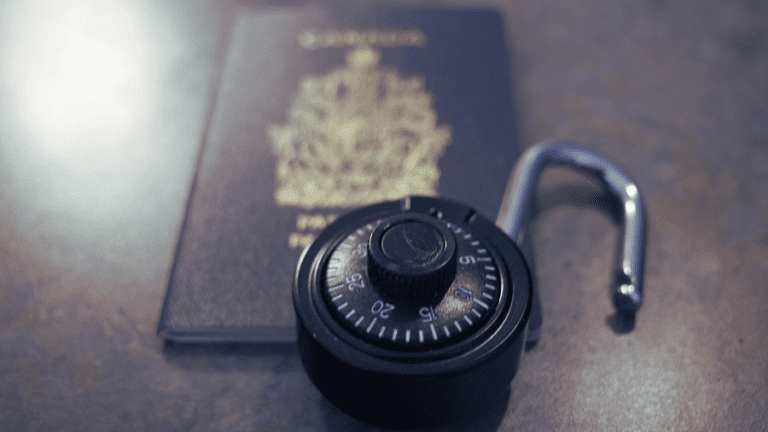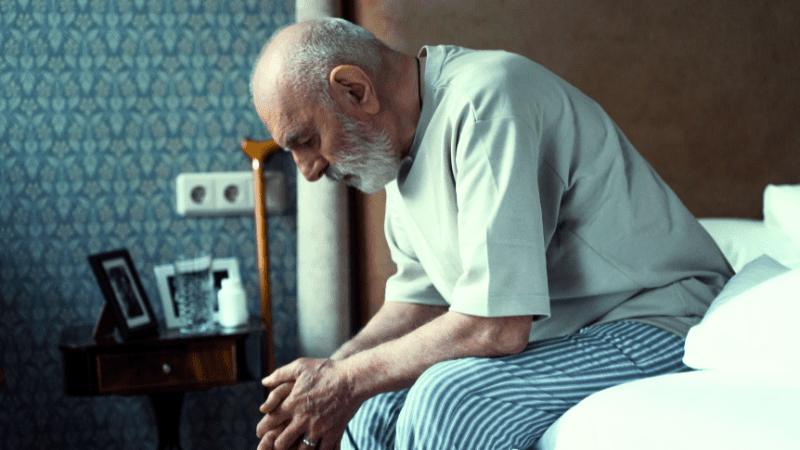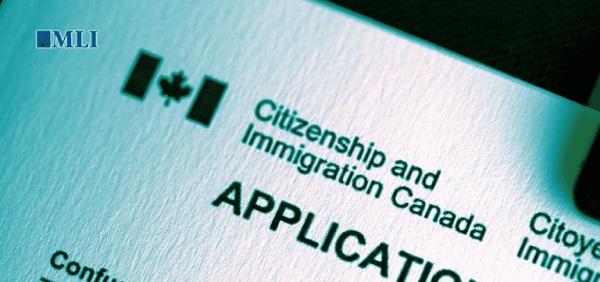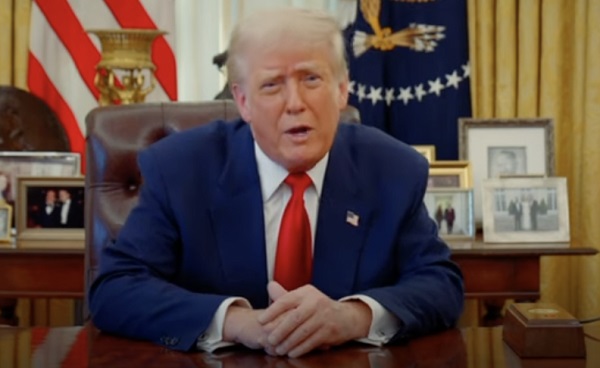MacDonald Laurier Institute
Canada, it’s not racist or xenophobic to talk about immigration

From the MacDonald Laurier Institute
By Joe Adam George
The sustained public antics post-October 7 has caused otherwise pro-immigrant Canadians to question the viability of our current policy
Since 1971, when Prime Minister Pierre Trudeau officially adopted a policy of multiculturalism, Canada has enthusiastically promoted and celebrated cultural diversity as a fundamental element of our national identity.
Perhaps wanting to step out of his father’s shadow and create his own legacy, in 2015, Prime Minister Justin Trudeau upped the multicultural ante by several notches, declaring to the world that Canada would become the “first post-national state”. In a now-infamous interview Trudeau claimed “there is no core identity, no mainstream in Canada.”
Last year, his government announced plans to welcome 500,000 new immigrants per year by 2025 and maintain those numbers annually in the subsequent years. Amidst growing public opposition to high immigration levels, Statistics Canada reported last month that Canada’s population grew by more than 430,000 during the third quarter of 2023 alone, marking the fastest pace of population growth since 1957 and pushing the country’s population past 40.5 million.
PM Trudeau’s pursuit of a post-national vision for Canada – through a blend of substantial hikes in immigration and a systemic push of woke progressivism that has effectively revised and erased Canadian history – has come at a significant cost to Canada’s national unity and security.
Examples of this disunity and lack of social integration have been particularly apparent in recent months. Following Hamas’ October 7 attacks against innocent Israeli civilians, the Jewish community in Canada have been subject to incessant acts of malice and violence by pro-Palestine protestors. Over the last three months, these dissenters have become a nuisance and a threat to all Canadians – from blocking traffic at major intersections and disrupting Christmas celebration events to intimidating businesses and shoppers, and in some extremely worrying instances, plotting to carry out terror attacks on Canadian soil.
Raging antisemitic and anti-Western speeches by controversial Muslim imams like Adil Charkaoui and Sheikh Younus Kathrada have added fuel to the fire (Charkaoui served jail time in 2003 on charges of terrorism and was later allowed a pathway to Canadian citizenship by a judge).
Predictably, questions about uncontrolled immigration and limited social integration have gained considerable prominence in the public square, so much so that the once-taboo topic of immigration could become a hot-button issue in the next federal election. The immigration discourse was already gaining traction on account of joint economic woes and the housing crisis, but the sustained public antics post-October 7 has caused otherwise pro-immigrant Canadians to question the viability of our current policy.
Eric Kaufmann, professor of politics at the University of Buckingham and Senior Fellow at the Macdonald-Laurier Institute, said to me in an interview, “A lot of the talk about integration misses the mark because it only takes into account integration indicators like people getting jobs, learning the language, voting, participating economically and politically, and even feeling a certain attachment to their adopted country, all of which I think are going reasonably well. The main driver for integration problems that we are currently seeing in Western countries is the degree of ethnocultural shifting that is taking place on account of mass immigration. This is bringing a much greater diversity of ethnic identities and religions and results in the importation of overseas conflicts into Western societies leading to inter-communal clashes between groups such as Sikh-Hindu, Muslim-Hindu or Muslim-Jew. The other factor is Islam and its perceived incompatibility with Western culture and values. All this contributes to the rise of populist movements across the globe, particularly in Europe.” Last month, an Angus Reid poll found that more than two-in-five (43%) Canadians believe Islam to be a “harmful presence” to their country.
Out of the over 1.3 million new immigrants who permanently settled in Canada from 2016 to 2021, approximately 1.14 million of them belonged to racialized communities, with most of them coming from South Asian, African and Arab countries. In a 2018 paper, Kaufmann and Matthew Goodwin argue that white Canadians will be a minority around the year 2050. It must be pointed out that this discussion is not about any deranged notion of preserving racial purity but about the effect of quick and massive ethnocultural change. Even with some mixing between cultures, geographic, marital and social patterns remain highly structured by ethnic identity in Canada; this is as true of the majority as of minorities, with white movers avoiding more diverse locations such as Richmond, BC or Brampton, ON. This attachment to one’s own group has been proven in the scholarly literature to be independent of any dislike of outgroups (except at times of violent conflict). Yet any mention of a sense of loss in the disruption of a previously dominant culture is immediately taken as hostility to outgroups and thus racist – a dishonest assessment.
Other countries that have traditionally welcomed a significant number of immigrants are now admitting that their immigration levels are out of control. Leaders (often privately) recognize that while linking immigration to job market needs, infrastructure capacity and economic growth opportunities is vital, greater value ought to be attached to encouraging immigrants to integrate and contribute to advancing a shared national vision. With elections looming in some of these countries, governments are taking belated measures to reduce the overall intake to appease their electorates.
The Danish government has advocated for a “zero refugee” policy. Australia announced new policies that are expected to cut down immigration by 50%. The UK Parliament passed a bill – dubbed “the toughest ever anti-illegal immigration legislation” – which aims to send illegal asylum-seekers to Rwanda. Germany approved legislation that would make it easier for authorities to quickly deport rejected asylum seekers. U.S. lawmakers are negotiating a deal to enforce security along its southern border with Mexico to combat illegal crossings.
It is worth highlighting that Denmark, Australia and Germany are run by left-wing or centre-left governments; mass immigration and social integration can be issues of concern to parties of all political stripes and not limited to “racist right-wing bigots” and “conservatives” as some might lazily portray. When asked which country Canada could take inspiration from to improve immigration controls, Kaufmann mentioned the Social Democrats in Denmark as exemplary.
“I think lowering numbers is absolutely at the heart of any successful immigration policy. I don’t think you can have high [immigration] numbers and not have a problem and you may even have different kinds of problems like antisemitism or anti-LGBTQ sentiments or communal conflicts or radicalization. Essentially, my view is that with high numbers and rapid cultural change, you simply get a loss of social connectedness. You have people in their bubbles moving around and that’s fine but when you get two groups that have an issue with each other, then you’re going to either have a conflict or you tend to get less civic-minded”, he said, citing renowned American political scientist, Robert Putnam’s thesis ‘E Pluribus Unum: Diversity and Community in the Twenty-first Century’. Putnam contends that sharp increases in immigration and ethnic diversity tend to reduce social solidarity and social capital in the short run, meaning social trust (even of one’s own race) would be lower, altruism and community cooperation rarer, and friends fewer, although on the flipside, it is likely to have long-term cultural, economic, fiscal, and developmental benefits.
When asked what continued mass immigration could mean for Canada, Kaufmann said, “I think Canada is moving in the direction of being a low-cohesion society. I mean, if that’s the choice they want to make, that’s fine. I think it’s partly because political correctness is stronger in Canada than almost anywhere else. So, it’s impossible to really have an honest debate about immigration which is one reason why the numbers are so high in Canada compared to other countries. It’s about what the elites will allow you to talk about in a democracy without labeling you a racist, which is completely dishonest, but that’s the way the debate has been conducted in Canada, as some sort of a sacred cow. It’s less sacred in Europe and so there’s more of a real debate around immigration numbers.”
Last month, fueled by concerns over growing antisemitism, the German state of Saxony-Anhalt made it mandatory for applicants wishing to live in the state to recognize Israel’s right to exist. In 2006, the Netherlands made it compulsory for prospective immigrants to watch a film with images of gay men kissing or topless women as part of the civic integration exam to test their readiness to participate in the Dutch liberal society.
When asked if such a values-based test or declaration for prospective immigrants was feasible, Kaufmann said, “People are allowed to have different opinions, even if they may be obnoxious. Even within the citizenry, there are people who don’t recognize the state of Israel and that’s an opinion you’re allowed to have. I think the test should probably focus on subjects like toleration of gays, Jews and women. However, I don’t think Canada is willing to consider qualitative culture-based criteria, such as assimilability to Canadian values, to assess potential immigrants, like they currently do in countries like Denmark, even though I think it would be a good idea. Canadian immigration is completely rooted in voodoo-based reasoning and there’s no economic or demographic rationale to it. The idea that immigration is a sustainable solution to the aging problem, for instance, has been comprehensively debunked. Somehow, it is a religion amongst Canadian elites and to some degree, across political parties. The Conservatives are too scared to touch it out of fear of being branded as racist and anti-immigrant by other parties and the media, even though most of their voters want a lot lower numbers. Regardless, you’ve got a cross-party consensus which is not based in reality.”
In 2016, federal Conservative leadership hopeful Kellie Leitch was heavily criticized, even by members of her own party, for floating the idea of screening out would-be immigrants to Canada, if they were openly intolerant or did not accept Canadian values and traditions such as respect and tolerance for other cultures, freedom of speech and equality.
The systematic dismantling and belittling of Canada’s history by our governments and institutions has left many immigrants seeing very little worth embracing in Canada, often resulting in a retention of their original values– some of which are contradictory to Canadian values and pose a hazard to the safety and security of vulnerable groups like LGBTQ, Jews, women and children.
While Kaufmann does not think Trudeau’s post-national comments have had an impact on the ground on their own, he said they reflect the mindset of the cultural left-dominated or progressive-dominated society.
“The media and the political culture in Canada are dominated by progressivism on any cultural issues, whether that be LGBTQ, religion, ethnicity or immigration. The longstanding narrative in Canadian academia about Canadian identity is that Canada’s just a multicultural country and the only thing it stands for is tolerance and diversity. In a way, multiculturalism is, more or less, a restatement of a post-national country that doesn’t really have a national identity and that’s what the elites want. It is a national identity that claims to have the moral high ground by proclaiming we don’t care about ethnicity or culture because we’re so virtuous and that is really what Trudeau implied. This is still a kind of national identity but based on pride in being holier than thou. His comments reflect an elitist philosophy that has led to record levels of immigration and poor integration.”
The Israel-Hamas war has highlighted the failure of integration inevitably resulting from rapid and uncontrolled mass immigration. Scenes of protestors disrupting Black Friday shopping and Christmas celebrations, or even threatening to kill people in the presence of police officers, were unimaginable in Canada not long ago.
First or second-generation immigrants like me – whether they be permanent residents, students, illegal aliens, or citizens – have immensely benefitted from the magnanimity of Western countries like Canada. In many cases we were offered refuge from the hatred, tyranny, racism, sexism, terrorism, and violence of our home countries. It should not be considered controversial or racist to point out instances of fellow immigrants treating Western generosity and tolerance as weaknesses to be manipulated, bragging about their growing numbers and the political clout they have amassed in liberal democracies (apparently without awareness of the hypocrisy apparent in their support for illiberal tyrannies whose violence drove them to take refuge in the West in the first place). Aaron Wudrick, Director of Domestic Policy at the Macdonald-Laurier Institute, encapsulates this view accurately in his tweet: “The important question isn’t how Canadians identify in terms of ethnicity. It’s whether they identify as *Canadian* and feel any attachment, belonging or commitment to our shared institutions.”
It is dishonest and irrational to label everyone concerned about out-of-control immigration numbers and the need for social cohesion as racist or xenophobic. The sooner we rid ourselves of fallacious name calling, the sooner we can start a serious debate about the best way forward for a compassionate and sustainable immigration policy that prioritizes Canada’s long-term national unity, security and economic interests.
Joe Adam George is a former foreign policy and national security research intern with the Washington, D.C.-based policy think tank, Hudson Institute, and a communications strategist.
MacDonald Laurier Institute
Rushing to death in Canada’s MAiD regime

 By Ramona Coelho for Inside Policy
By Ramona Coelho for Inside Policy
Canada legalized Medical Assistance in Dying (MAiD) in 2016, encompassing both euthanasia and assisted suicide. Initially limited to those nearing their natural death, eligibility expanded in 2021 to individuals with physical disabilities, with eligibility for individuals with mental illness in 2027. Parliamentary recommendations include MAiD for children. A recent federal consultation explored extending MAiD to those who lack capacity via advance directives, an approach Quebec has already adopted, despite its criminal status under federal law.
Despite its compassionate framing, investigative journalists and government reports reveal troubling patterns where inadequate exploration of reversible suffering – such as lack of access to medical treatments, poverty, loneliness, and feelings of being a burden – have driven Canadians to choose death. As described by our former Disability Inclusion Minister, Canada’s system at times makes it easier to access MAiD than to receive basic care like a wheelchair. With over 60,000 MAiD cases by the end of 2023, the evidence raises grave concerns about Canada’s MAiD regime.
I am a member of Ontario’s MAiD Death Review Committee (MDRC). Last year, the Chief Coroner released MDRC reports, and a new set of reports has just been published. The first report released by the Office of the Chief Coroner, Waivers of Final Consent, examines how individuals in Track 1 (reasonably foreseeable natural death) can sign waivers to have their lives ended even if they lose the capacity to consent by the scheduled date of MAiD. The second, Navigating Complex Issues within Same Day and Next Day MAiD Provisions, includes cases where MAiD was provided on the same day or the day after it was requested. These reports raise questions about whether proper assessments, thorough exploration of suffering, and informed consent were consistently practised by MAiD clinicians. While MDRC members hold diverse views, here is my take.
Rushing to death, Ignoring Reversible Causes of Suffering
In the same-day or next-day MAiD report, Mrs. B, in her 80s, after complications from surgery, opted for palliative care, leading to discharge home. She later requested a MAiD assessment, but her assessor noted she preferred palliative care based on personal and religious values. The next day, her spouse, struggling with caregiver burnout, took her to the emergency department, but she was discharged home. When a request for hospice palliative care was denied, her spouse contacted the provincial MAiD coordination service for an urgent assessment. A new assessor deemed her eligible for MAiD, despite concerns from the first practitioner, who questioned the new assessor on the urgency, the sudden shift in patient perspective, and the influence of caregiver burnout. The initial assessor requested an opportunity for re-evaluation, but this was denied, with the second assessor deeming it urgent. That evening, a third MAiD practitioner was brought in, and Mrs. B underwent MAiD that night.
The focus should have been on ensuring adequate palliative care and support for Mrs. B and her spouse. Hospice and palliative care teams should have been urgently re-engaged, given the severity of the situation. Additionally, the MAiD provider expedited the process despite the first assessor’s and Mrs. B’s concerns without fully considering the impact of her spouse’s burnout.
The report also has worrying trends suggesting that local medical cultures—rather than patient choice—could be influencing rushed MAiD. Geographic clustering, particularly in Western Ontario, where same-day and next-day MAiD deaths occur most frequently, raises concerns that some MAiD providers may be predisposed to rapidly approve patients for quick death rather than ensuring patients have access to adequate care or exploring if suffering is remediable. This highlights a worrying trend where the speed of the MAiD provision is prioritized over patient-centered care and ethical safeguards.
MAiD without Free and Informed Choice
Consent has been central to Canadians’ acceptance of the legalization of euthanasia and assisted suicide. However, some cases in these reports point to concerns already raised by clinicians: the lack of thorough capacity assessments and concerns that individuals may not have freely chosen MAiD.
In the waiver of final consent report, Mr. B, a man with Alzheimer’s, had been approved for MAiD with such a waiver. However, by the scheduled provision date, his spouse reported increased confusion. Upon arrival, the MAiD provider noted that Mr. B no longer recognized them and so chose not to engage him in discussion at all. Without any verbal interaction to determine his current wishes or understanding, Mr. B’s life was ended.
In the same-day or next-day MAiD report, Mr. C, diagnosed with metastatic cancer, initially expressed interest in MAiD but then experienced cognitive decline and became delirious. He was sedated for pain management. Despite the treating team confirming that capacity was no longer present, a MAiD practitioner arrived and withheld sedation, attempting to rouse him. It was documented that the patient mouthed “yes” and nodded and blinked in response to questions. Based on this interaction, the MAiD provider deemed the patient to have capacity. The MAiD practitioner then facilitated a virtual second assessment, and MAiD was administered.
These individuals were not given genuine opportunities to confirm whether they wished to die. Instead, their past wishes or inquiries were prioritized, raising concerns about ensuring free and informed consent for MAiD. As early as 2020, the Chief Coroner of Ontario identified cases where patients received MAiD without well-documented capacity assessments, even though their medical records suggested they lacked capacity. Further, when Dr. Leonie Herx, past president of the Canadian Society of Palliative Medicine, testified before Parliament about MAiD frequently occurring without capacity, an MP dismissed her, advising Parliament to be cautious about considering seriously evidence under parliamentary immunities that amounted to malpractice allegations, which should be handled by the appropriate regulatory bodies or police. These dismissive comments stand in stark contrast with the gravity of assessing financial capacity, and yet the magnitude is greater when ending life. By way of comparison, for my father, an Ontario-approved capacity expert conducted a rigorous evaluation before declaring him incapable of managing his finances. This included a lengthy interview, collateral history, and review of financial documents—yet no such rigorous capacity assessment is mandated for MAiD.
What is Compassion?
While the federal government has finished its consultation on advance directives for MAiD, experts warn against overlooking the complexities of choosing death based on hypothetical suffering and no lived experience to inform those choices. A substitute decision-maker has to interpret prior wishes, leading to guesswork and ethical dilemmas. These cases highlight how vulnerable individuals, having lost the capacity to consent, may be coerced or unduly influenced to die—whether through financial abuse, caregiver burnout, or other pressures—reminding us that the stakes are high – life and death, no less.
The fundamental expectation of health care should be to rush to care for the patient, providing support through a system that embraces them—not rush them toward death without efforts to mitigate suffering or ensure free and informed consent. If we truly value dignity, we must invest in comprehensive care to prevent patients from being administered speedy death in their most vulnerable moment, turning their worst day into potentially their last.
Dr. Ramona Coelho is a family physician whose practice largely serves marginalised persons in London, Ontario. She is a senior fellow at the Macdonald-Laurier Institute and co-editor of the new book “Unravelling MAiD in Canada” from McGill University Press.
Immigration
Immigrant background checks are unrelated to national security?

 By David L. Thomas for Inside Policy
By David L. Thomas for Inside Policy
Canadians are rightly under the impression that migrants have been properly vetted before coming into our country. But it’s clear we’re not living up to expectations.
A recently de-classified 2022 report of the National Security and Intelligence Review Agency (NSIRA) suggests we’ve entirely misplaced our priorities when it comes to protecting Canadians from foreigners with dangerous backgrounds. Apparently referring prospective immigrants from places in the world beset with violent extremism for deeper background checks could constitute discrimination against those individuals that is “not justifiable on security grounds.”
Arbitrary discrimination on a prohibited ground is wrong. However, it is obviously important, for example, for the government to conduct proper security checks when we admit people into Canada as immigrants. There are times when certain discrimination might be warranted.
Essentially, for fear of being accused of discrimination, our national security oversight committee has deemed that checking prospective immigrants for ties to terrorist organizations is not a matter of national security. This is plainly absurd and is a grave risk to our national security.
The decision-style report of the NSIRA tribunal related to a group of complaints before the Canadian Human Rights Tribunal (CHRT) under the Canadian Human Rights Act (CHRA). The large group of complainants were citizens of Iran seeking temporary or permanent visas to Canada and who were subjected to security background checks. They alleged discrimination on the basis of race and that the CSIS checks delayed the processing of their visa applications (reported by NSIRA as an average delay of 14 days for temporary visas and 26 days for immigration visas). Iran is a country with which we have no diplomatic relations and we have designated as a state sponsor of terrorism since 2012.
Without the resources of CSIS and a deeper security check, how could an immigration officer in the field determine if a visa applicant may have once been a member of a terrorist organization, like al-Qaeda, or a drug cartel? CSIS security checks are designed to look deeper into an individual’s background, sometimes with the co-operation of foreign spy agencies.
These complaints came across my desk in the final months of my term as the Chairperson of the CHRT. Having previously practiced immigration law for more than 20 years, I was well aware of CSIS security background checks. My expectation was that the NSIRA would recommend dismissal of the complaints because, well of course, checking whether a prospective immigrant is connected to a terrorist organization has to be related to the security of Canada, no?
Apparently not.
The CHRT complaints were suspended under a never-before-used section of the CHRA. Under Section 45, the Minister of Immigration, Refugees and Citizenship Canada gave notice “that the (alleged discriminatory) practice to which the complaint relates was based on considerations relating to the security of Canada.” Despite this notice, the Human Rights Commission declined to dismiss the complaints and instead referred the matter to the NSIRA to provide a report on the matter.
The NSIRA report was the first of its kind and acknowledged there is little legislative guidance on the nature of its role under a Section 45 referral. However, in my view, the NSIRA has usurped the role of the CHRT by determining that the criteria applied for requesting the CSIS background checks “was not justifiable on security grounds.” In my view, their determination should have been limited to only whether the alleged discriminatory practices related to national security.
Nevertheless, the complaints are now proceeding before the CHRT to determine if it was discriminatory to make referrals for security background checks.
Arbitrary discrimination is, in most cases, against the law. However, there are exceptions, and one of them is Section 45 of the CHRA which creates a “carve out” from the normal rules when a matter of national security is on the line. And yet, the NSIRA decision bizarrely set aside national security and failed to grant the exception.
Canada has drastically increased its intake of migrants in recent years. Since 2021, the annual target for permanent residents was almost doubled to 500,000. Non-immigrant foreigners, mostly students and temporary workers, accounted for 2.5 million people, or 6.2% or the population in 2023. As these are people entering Canada legally, Canadians are rightly under the impression that migrants have been properly vetted before coming into our country. But it’s clear we’re not living up to expectations.
Canada recently admitted Muhammad Shahzeb Khan from Pakistan, accused of plotting a massive attack against Jews in New York last October. When this news broke Canada was still reeling from the embarrassment of having just granted Canadian citizenship to Ahmed Fouad Mostafa Eldidi. Along with his son, Mostafa Eldidi, he was arrested in July last year as the pair was accused of being in the advanced stages of planning a violent attack on behalf of ISIS in Toronto. Apparently, Ahmed appears in a 2015 video dismembering an ISIS prisoner with a sword.
All prospective immigrants to Canada are subject to checks for past criminal activity. However, sometimes an immigration officer might flag an applicant for a security screening by the Canadian Security Intelligence Service (CSIS) to determine if a visa applicant has ties to terrorist groups, espionage, war crimes, crimes against humanity, etc.
In order to protect Canada, immigration officers in the field should have the unfettered discretion to refer any non-Canadian for a CSIS security background check. The referral is not a denial of entry into Canada. Applicants are just being asked to wait a little longer until we’re satisfied about their background. Immigration officers should not be second-guessing themselves about this discretion for fear of a human rights complaint.
Now is the time for Canada to set its priorities right. Our national security must be paramount and should not be hamstrung by unrealistic idealism.
David Thomas, a senior fellow at the Macdonald-Laurier Institute, is a lawyer and mediator in British Columbia. From 2014 to 2021, he was the chairperson of the Canadian Human Rights Tribunal.
-

 Also Interesting2 days ago
Also Interesting2 days agoMortgage Mayhem: How Rising Interest Rates Are Squeezing Alberta Homeowners
-

 2025 Federal Election2 days ago
2025 Federal Election2 days agoConservative Party urges investigation into Carney plan to spend $1 billion on heat pumps
-

 Also Interesting2 days ago
Also Interesting2 days agoExploring Wildrobin Technological Advancements in Live Dealer Games
-

 2025 Federal Election2 days ago
2025 Federal Election2 days agoCommunist China helped boost Mark Carney’s image on social media, election watchdog reports
-

 2025 Federal Election2 days ago
2025 Federal Election2 days agoFifty Shades of Mark Carney
-

 2025 Federal Election2 days ago
2025 Federal Election2 days agoCorporate Media Isn’t Reporting on Foreign Interference—It’s Covering for It
-

 Business1 day ago
Business1 day agoStocks soar after Trump suspends tariffs
-

 Justice2 days ago
Justice2 days agoCanadian government sued for forcing women to share spaces with ‘transgender’ male prisoners




